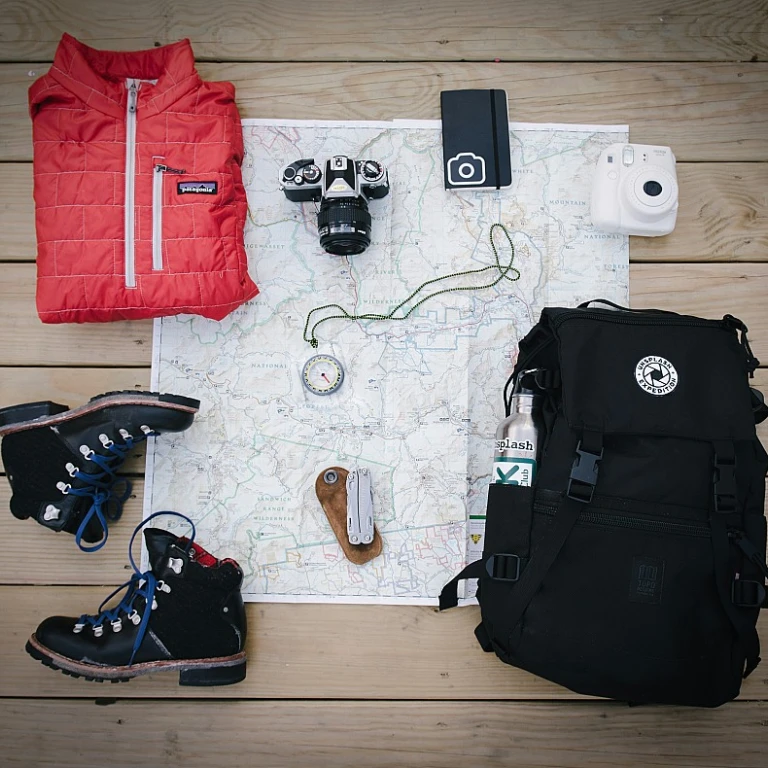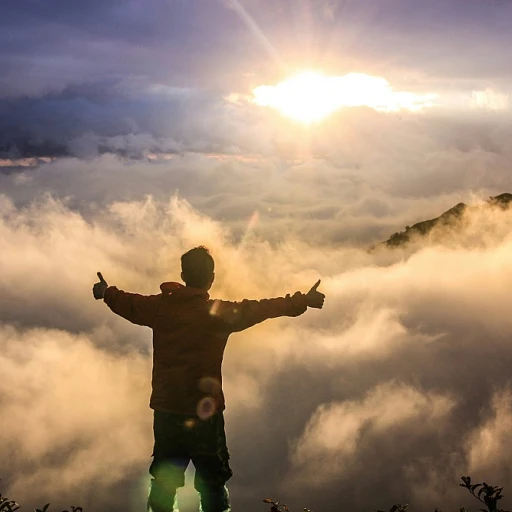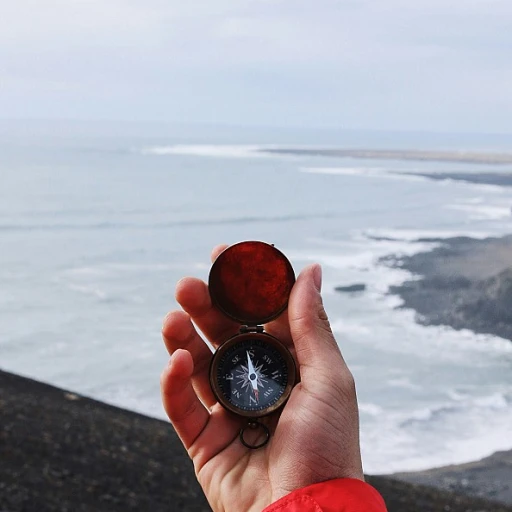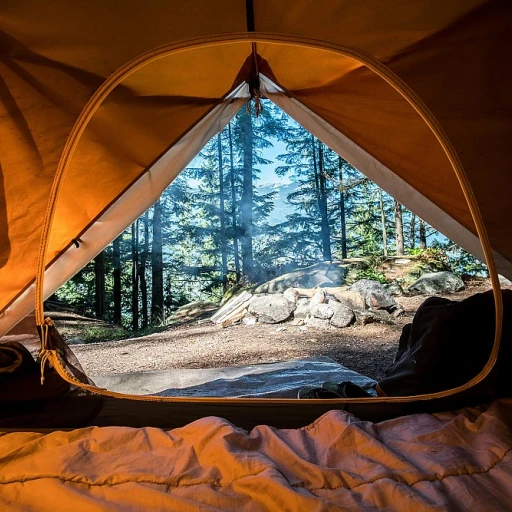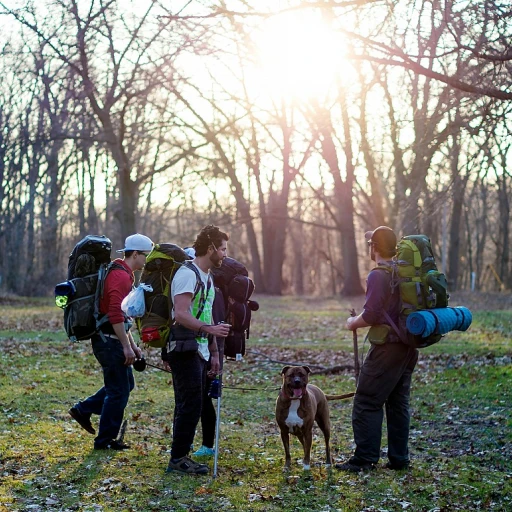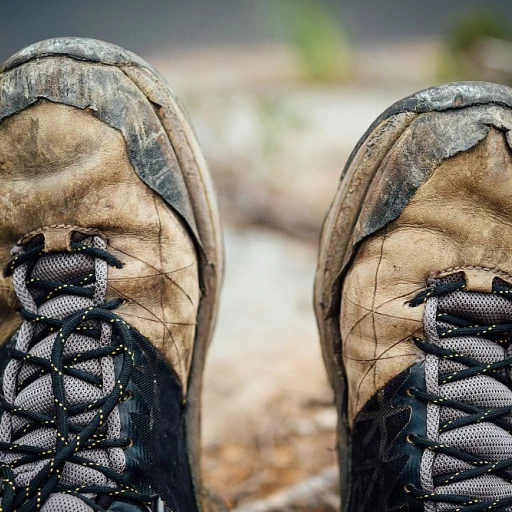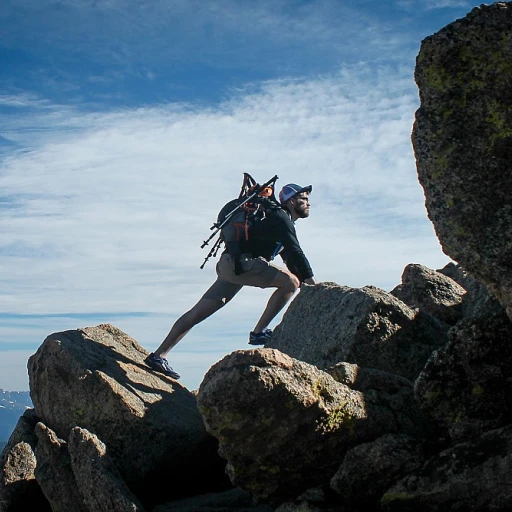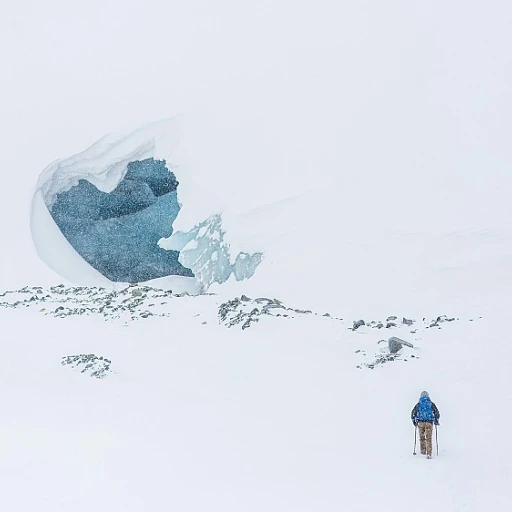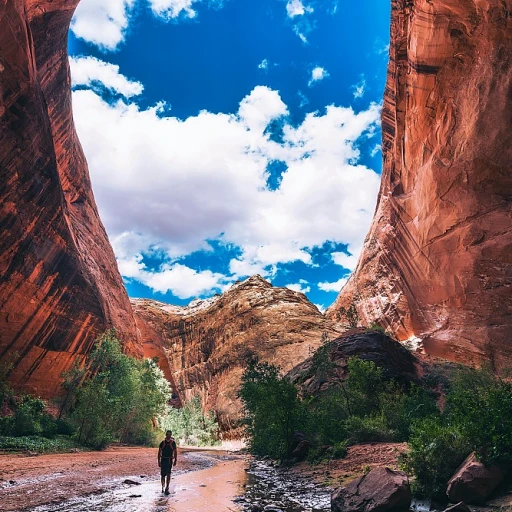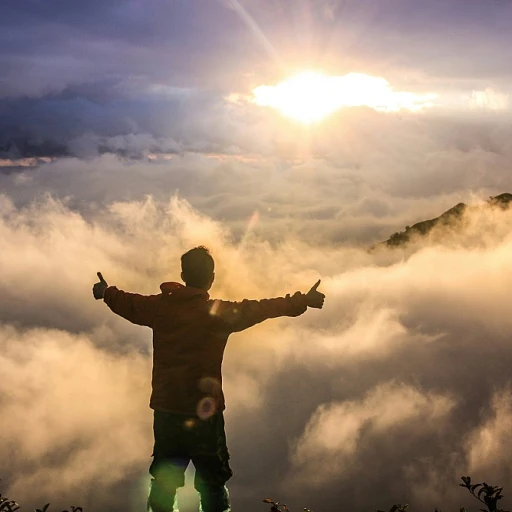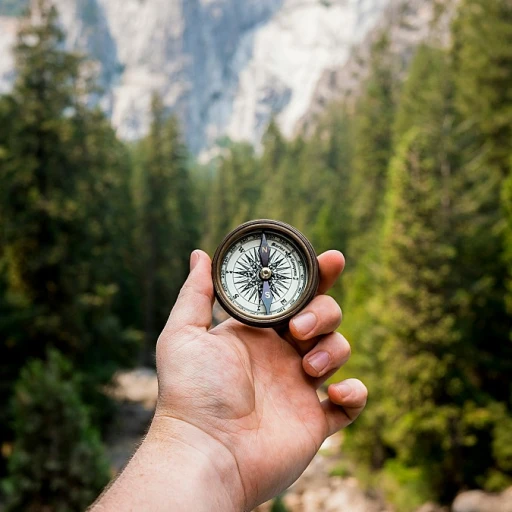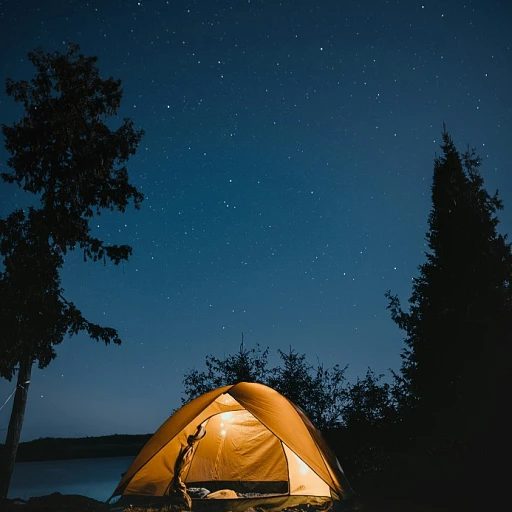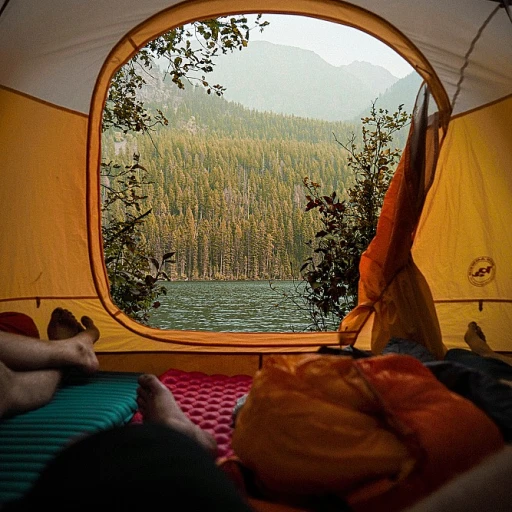
Understanding the Diverse Terrain
Discovering Washington's Mountain Terrain
Washington State is a hiker's dream, with its mountains offering a playground of peaks and valleys that stretch across the Pacific Northwest. From the towering Mount Rainier to the rugged beauty of the North Cascades, the state is a haven for outdoor enthusiasts. The diverse terrain here is more than just a backdrop; it's an invitation to explore the heart of nature.
Each area has its own character. The Olympic Mountains boast lush rainforests and wild coastlines, while the Mount Baker region is known for its volcanic landscapes and alpine lakes. Heading towards the Columbia River, the terrain shifts to rolling hills and dramatic gorges. This variety ensures that whether you're a seasoned mountaineer or a casual hiker, there's a trail that matches your skill level and sense of adventure.
Iconic Peaks and Trails
The state's peaks are iconic. Mount Rainier, the most prominent, stands as a sentinel over the region, offering trails that range from easy day hikes to challenging summit attempts. Mount Adams and Mount Saint Helens provide unique volcanic landscapes, while Mount Shuksan and Mount Stuart are favorites for those seeking less-traveled paths.
For those looking to explore further, the North Cascades National Park is often referred to as the "American Alps" for its rugged peaks and deep valleys. It's a place where solitude and natural beauty intertwine, making it a hiker's paradise.
Weather and Seasonal Changes
Weather in Washington can be unpredictable, with conditions varying dramatically between regions. The coastal areas of the Olympic Mountains are often wet and misty, while the eastern slopes of the Cascades are drier. Summer is the most popular hiking season, but fall offers vibrant colors, and winter brings snow-covered vistas that transform the landscape.
It's important to be prepared for these changes, as they can affect trail conditions and accessibility. In the next section, we'll cover essential preparation and safety measures to ensure a safe and enjoyable hiking experience in Washington's great outdoors.
Preparation and Safety Measures
Getting Ready for the Peaks
Washington State is a hiker's dream, with its majestic peaks and trails. But before setting foot on the trail, preparation is key. Whether you're aiming for the summit of Mount Rainier or exploring the rugged paths of the North Cascades, having the right gear and knowledge can make all the difference.
Gear Up for the Adventure
First things first, your gear. A reliable pair of hiking boots is essential. They provide the support and traction needed for the varied terrains of Washington's state mountains. Layering is another must. The weather can change rapidly, especially at higher altitudes like those found on Mount Baker or Glacier Peak. Pack a waterproof jacket, thermal layers, and a hat to protect against the elements.
Safety First
Safety should never be an afterthought. Always inform someone about your plans, including your expected return time. Carry a map and compass, even if you have a GPS device. The trails in the United States' national parks, like Rainier National Park, can be challenging to navigate without them.
Understanding the Conditions
Check the weather forecast before heading out. The Pacific Northwest is known for its unpredictable weather, and conditions can vary greatly from the base to the summit. Mount Saint Helens and Mount Adams, for example, can have snow at the top even when it's warm at the bottom.
Stay Hydrated and Energized
Hydration is crucial, especially when trekking in higher altitudes like those in the Olympic Mountains or Mount Shuksan. Bring plenty of water and snacks to keep your energy up. Dehydration can sneak up on you, so take regular breaks to drink and refuel.
Respect the Trails
As you explore the trails of the Columbia River Gorge or the vast expanses of the Cascades National Park, remember to respect nature. Stick to marked paths to protect the fragile ecosystem and minimize your impact. The Leave No Trace principles are vital in preserving these beautiful areas for future adventurers.
For more insights on exploring these incredible landscapes, check out this hiker's paradise.
Top Trails for Different Skill Levels
Washington Trails: The Joy of Discovery
With its breathtaking mountains and picturesque landscapes, Washington State invites hikers to explore its trails, no matter their expertise. Whether you're a seasoned trekker or just getting started, the state offers a variety of paths to satisfy your adventurous spirit.Beginner-Friendly Routes
For those new to hiking, or families looking for a gentle adventure, the Trail of the Cedars at Mount Rainier National Park offers accessible paths with mesmerizing views. The Nisqually Vista Trail plants you amidst wildflowers and grants a peek at the majestic summit of Mount Rainier, making it a perfect introduction to Washington's splendor.Intermediate Paths Awaiting Exploration
Intermediate hikers, eager for a challenge but not yet ready for strenuous climbs, can breathtakingly wander through the North Cascades. Nestled within North Cascades National Park, the Maple Pass Loop boasts alpine lakes and rugged peaks, offering both thrill and tranquility. Interested readers can explore more about Washington's untamed beauty in this guide.Aspiring to the Zenith
For the seasoned adventurer ready to conquer higher peaks, Mount Adams and Mount Saint Helens stand as icons in Washington's mountain range. These hikes promise to test your grit while delivering unmatched panoramas from their lofty heights. Meanwhile, Mount Shuksan's majestic profile in the North Cascades beckons with demanding terrain and icy beauty.Planning Your Hike
Before setting foot on these incredible trails, ensure that your backpack is ready with essentials such as water, snacks, and layers for changing weather conditions. Understanding the unique demands of Washington's mountain areas ensures a safe and enjoyable hiking experience. Whether you're gearing up for Mount Baker or preparing for a trek near the Columbia River, embrace safety by knowing your limits and respecting nature. With the myriad of trails offering unique views and experiences, Washington's mountains are a treasure trove for hikers at all levels. Each path reveals a different facet of the state's natural wonders, encouraging exploration and a deeper connection with the environment.Navigating the Challenges of High Altitude
Facing the Heights: A Hiker's Guide to High Altitude
Reaching the peaks of Washington's towering mountains is a thrilling experience, but it comes with its own set of challenges. From Mount Rainier to the North Cascades, the state is home to some of the most breathtaking high-altitude hikes in the United States. However, tackling these heights requires preparation and awareness.
First, it's important to understand the impact of altitude on your body. As you ascend, the air becomes thinner, which can lead to altitude sickness. Symptoms like headaches, nausea, and dizziness can occur as low as 8,000 feet, common in areas like Mount Adams and Glacier Peak. To combat this, take your time to acclimate. Gradual ascents and spending a night at a mid-altitude camp can help your body adjust.
Hydration is key when hiking at high altitudes. The dry air can quickly lead to dehydration, so make sure to drink plenty of water before and during your hike. Consider carrying a water filtration system if you're exploring remote trails like those in the Cascades National Park.
Weather conditions can change rapidly in the mountains of Washington State. Always check the forecast before you head out and be prepared for sudden shifts. Pack layers to stay warm and dry, and don't forget a sturdy pair of hiking boots to navigate the rocky terrain of peaks like Mount Baker and Mount Stuart.
Navigation skills are crucial in these remote areas. Trails can be less defined at higher elevations, so having a reliable map and compass, or a GPS device, is essential. Familiarize yourself with the route beforehand, especially if you're venturing to summits like Mount Shuksan or Mount Saint Helens.
Lastly, remember that respecting the environment is paramount. Follow Leave No Trace principles to preserve the beauty of Washington's mountains for future adventurers. This includes packing out all trash and minimizing your impact on the natural surroundings.
Conquering the peaks of Washington State is no small feat, but with the right preparation and respect for the mountains, it can be an unforgettable adventure.
Respecting Nature and Leave No Trace Principles
Preserve and Honor the Wilderness
In the grand settings of Washington's jagged mountains and picture-perfect trails, it's the love of nature that pulls hikers and mountaineers to this pristine wilderness. And with that passion comes a responsibility—a commitment to protect and honor the beauty of the Pacific Northwest. When you find yourself gazing at the spectacular sight of Mount Rainier, Saint Helens, or the mighty peaks of the North Cascades, remember, you are a guest in their majestic realm. Embrace the Leave No Trace principles as your guide. From the lush trails of Olympic National Park to the raw beauty of Mount Baker and the solitary rise of Mount Adams, each step matters. This isn't just about packing out your trash; it's a pledge to tread lightly.- Stay on Marked Trails: As tempting as it might be to wander off for a coveted photo spot, venturing off can lead to damage in delicate ecosystems. Stick to designated paths, just like those in the stunning Columbia River Gorge.
- Be Mindful of Wildlife: Whether you’re encountering a mischievous marmot on the slopes of Glacier Peak or catching sight of a soaring eagle over Mount Stuart, observe from a distance. Feeding wildlife disrupts their natural behavior and diet.
- Camp Responsibly: When laying your head to rest in the wilds, whether it’s beneath the towering associations of Mount Baker in the Cascades National Park, choose established campsites. Respect campfire regulations and ensure your fire is fully extinguished.
Capturing the Experience: Photography Tips
Framing the Perfect Shot
Capturing the stunning beauty of Washington's peaks isn't just about pointing and shooting. Whether you're atop Mount Rainier or trekking through the North Cascades, understanding your environment is key. Consider the time of day; sunrise and sunset offer the best natural lighting, casting a magical glow over the mountains. When photographing the Olympic Mountains or Mount Baker, try to include elements like wildflowers or the winding trails to add depth and interest to your photos.
Gear Up for Success
Investing in a good camera or even a high-quality smartphone can make a world of difference. A tripod is essential for those long-exposure shots, especially when capturing the night sky over Mount Adams or the serene beauty of Glacier Peak. Don't forget extra batteries and memory cards. The last thing you want is to run out of juice or space just as you reach the summit.
Get Creative with Angles
Experimenting with different angles can bring a fresh perspective to your photos. Try shooting from a lower angle to make the towering peaks of Mount Shuksan or Mount Stuart appear even more majestic. Capture reflections in the lakes found in Rainier National Park or along the Columbia River for a dramatic effect. Remember, sometimes the best shots are those that break the rules.
Tell a Story
Your photos should tell a story of your journey through the state mountains of Washington. Include shots of your fellow hikers, your gear, or even the wildlife you encounter. These elements add context and emotion, making your photographic journey through the Pacific Northwest more relatable and memorable.
Respect and Enjoy
While capturing the beauty of these mountains, remember to respect the environment. Follow the Leave No Trace principles discussed earlier. This ensures that the breathtaking vistas of Mount Saint Helens and the Cascades National Park remain pristine for future adventurers. Happy shooting!

